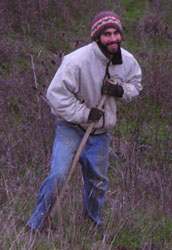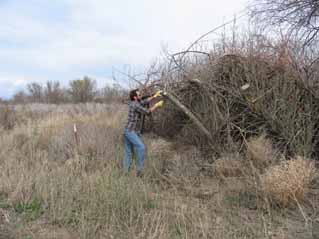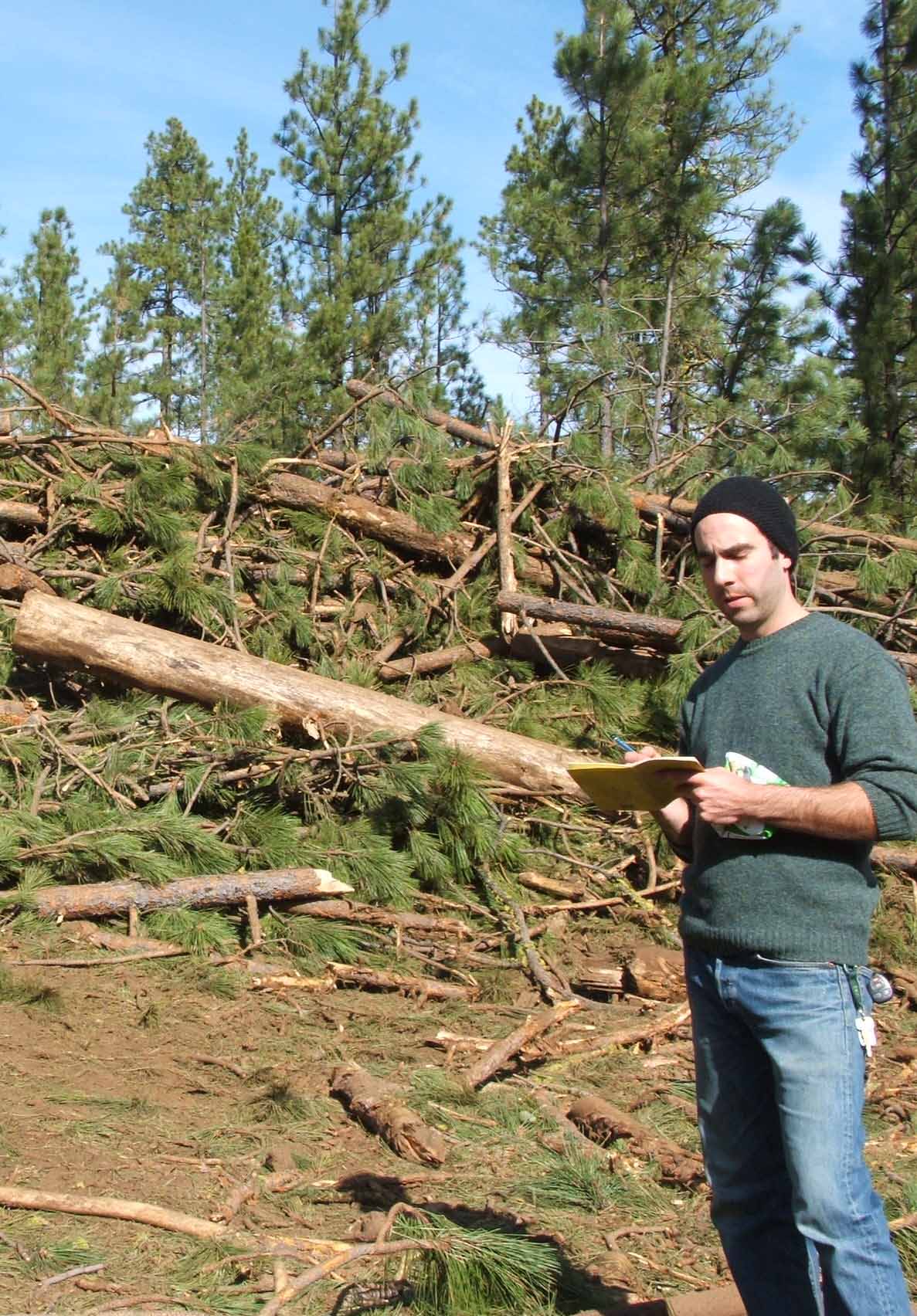
Lloyd Nackley




Provided by Center for Aquatic Plants of Florida, Gainesville, 1996. Ann Murray, Illustrator
People - Students - Lloyd Nackley
Lloyd Nackley
Education: BS, Environmental Horticultural
Science 2003 California State Polytechnic University
Major: Forest Resources
Advisors: Kristiina Vogt and Sarah Reichard
Major Research Project: An Ecological
Risk Assessment of Giant Reed, Arundo donax, as a Feedstock for Cellulosic
Biofuel Production.
Context of Research: Giant reed (Arundo donax)
is a grass (Poaceae) resembling sugar cane or bamboo, and is
a noxious weed, in many watersheds, outside of its native range (Eurasia).
Giant reed reduces native vegetation, reduces habitat for native fauna,
reduces the ecosystem biodiversity, and may increase fire frequency
and intensity. Giant Reed is also being developed as a biofuel feedstock
in North America and Europe, because it displays many beneficial attributes
as an energy crop. Like other perennial, rhizomatous grasses Arundo
donax is attractive for biomass production, because of its high
yield, efficient water-use, high contents of lignin and cellulose, low
water content, low nutrient requirements, few pests or diseases, the
limited need for soil tillage (restricted to the year which the crops
are established), rapid growth and long canopy duration (to outcompete
weeds), and Arundo is sterile. However, Arundo donax
was selected to fulfill the demands of bioenergy production based on
the high biomass yields and appropriate biomass characteristics (Lewandowski
et al. 2003), without regard to environmental risks associated with
non-native plant invasions into surrounding native plant communities.
Other than sterility, the characteristics which make Arundo
as an ideal biofuel crop also typify much of our invasive flora (Barney
and DiTomaso 2008). Furthermore, cultivation of Arundo donax
increases the likeliness of establishment by increasing number of plants,
which are potential propagule sources; the unnatural populations are
able to overcome biotic and abiotic stressors by sheer force of numbers
(Lockwood et al. 2005). The indications, of a potential biological invasion
by Arundo donax, call for the need of a thorough ecological
analysis and risk assessment.
Research Plan: Risk assessment of Arundo donax as
a biofuel source is an estimation of probabilities and magnitudes of
a biological invasion into native ecosystems. An ecological risk assessment
evaluates the likelihood that adverse ecological effects may occur or
are occurring as a result of exposure to one or more stressors and is
developed within a risk management context to evaluate human-induced
changes that are considered undesirable (EPA 1998). Four approaches
recommend by the Ecological Society of America are: environment matching;
consideration of propagule pressure; analysis based on the traits of
species; and expert opinion (Lodge et al. 2006).
- A species distribution model, a spatially explicit statistical and empirical model of species distribution (Guisan and Thuiller 2005), which are based on ecological niches and may be used with high predictive accuracy to assess potential biological invasions (Peterson 2003).
- Quantitative estimation of propagule pressure appropriate to the scale of the proposed cultivation.
- The Australian Weed Risk Assessment (WRA) (Pheloung 1999) is commonly used model for evaluating invasive potential based on traits of species. I will use bootstrapping and Bayesian statistical techniques (Caley et al.2006) to quantify the uncertainty of the WRA and thereby better enable managers to make decisions regarding risk.
Along these guidelines, my research will develop:
Reference:
Barney, J. N. and J.M. Ditomaso (2008). "Nonnative species and bioenergy: Are we cultivating the next invader?" Bioscience 58 (1): 64-70.
Caley, P., W.M. Lonsdale, et al. (2006). "Quantifying uncertainty in predictions of invasiveness, with emphasis on weed reisk assessment." Biological Invasions 8 (8): 1595-1604.
Guisan, A. and W. Thuiller (2005). "Predicting species distribution: offering more than simple habitat models." Ecology Letters 8 (9): 993-1009.
Keller, R. P., D.M. Lodge, et al. (2007). "Risk assessment for invasive species produces net bioeconomic benefits." Proceedings of the National Academy of Sciences of the United States of America 104 (1): 203-207
Lockwood, J. L., P. Cassey, et al. (2005). "The role of propagule pressure in explaining species invasions." Trends in Ecology & Evolution 20 (5): 223-228.
Lodge, D. M., S. Williams, et al. (2006). "Biological Invasions: Recommendations for U.S. Policy and Management." Ecological Applications 16 (6): 2035-2054
Pheloung, P.C., P.A. Williams, et al. (1999). "A weed risk assessment model for use as a biosecurity tool evaluating plant introductions." Journal of Environmental Management 57 (4): 239-251
Peterson, A. T. (2003). "Predicting the Geography of Species’ Invasions Via Ecological Niche Modeling." Quarterly Review of Biology 78 (4): 419-433.
U.S. Environmental Protection Agency (EPA), (1998). "Guidelines for Ecological Risk Assessment", Risk Assessment Forum, EPA/630/R-95/002F, Washington D.C.

